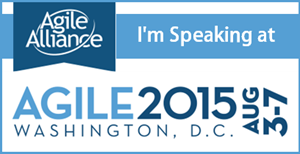We’re coming to Washington D.C.!
Serious teams, developers, managers and executives from over 40 countries are about to descend on an unsuspecting Washington D.C. There’ll be over 1,800 attendees exploring more than 240 talks and workshops from some world-class experts. We have been invited to run a workshop (details below) on Friday, August 7 (9:00 – 10:15). According to the conference schedule we will be in Potomac 5/6.
Quantifying Cost of Delay: Why is it the “one thing” to quantify? How do I do it?
Don Reinertsen says that if you only quantify one thing, quantify the Cost of Delay. As we’ve talked about before, quantifying Cost of Delay not only helps improve prioritisation, it also help with making trade-off decisions, creates a sense of urgency, and changes the focus of the conversation. Maybe this has got you interested in experimenting with it, but you’re not sure how to get started? If so, this workshop is specifically for you!
When people hear about Cost of Delay they sometimes doubt whether their organisation is ready for it. They say things like, “We don’t have the maturity for it”, or “We couldn’t do that because our stakeholders wouldn’t support it”. We’ve heard people say this too. And yet, in hindsight, people find it much easier than they thought! We will show you how to get started with using Cost of Delay, despite these doubts.
Building blocks
The first essential building block is to understand the value. To help structure the conversation we will use a simple economic framework to surface the assumptions and drive to the economic impacts. The second essential building block is to understand the urgency. For this, we will look at different urgency curves to help us understand how value is likely to decay over time. Combining these two gives us the Cost of Delay helping us to question and better understand what our gut tells us about value and urgency.
Practice makes perfect!
To get going, we will start by looking at some simplified scenarios that help you put what you’ve learned about Cost of Delay into practice. You’ll work at your own pace through some simple exercises that test different aspects of your understanding. To really embed it, once you’re done you’ll get a chance to help others around you – you become the teacher. We will then quickly reflect on what we’ve learned so far.
Then, we’re all going to work on quickly estimating the Cost of Delay for a real life example for a real company. You’ll do this in pairs making assumptions you need to get to a cost of delay for the feature in dollars per week. To help us learn about what the key assumptions were we will compare results across the group to help us understand what the value might be and the areas of greatest uncertainty.
To wrap up we’re going to ask you to do a mini-retrospective about what you’ve learned and what your puzzles are. If we have any time left, we’re happy to help you have a go with a feature or project you are working with.
Learning Outcomes
By the end of this session you should be able to go back to your organisation armed with a better understanding of what Cost of Delay is, why it’s useful and be confident enough to apply it.
- Learn about an economic framework for estimating value
- Learn about the most common urgency profiles we see
- Do some exercises to work out the Cost of Delay for a set of scenarios
- Get some practice with helping others to calculate the Cost of Delay
- Learn about the assumptions we often need to make in order to calculate Cost of Delay.
- Get to a Cost of Delay figure (in dollars per week) for a real situation, compare and contrast with others.
- Be able to calculate the Cost of Delay for your own Project or Feature.
Signal your intention to attend the workshop here.

